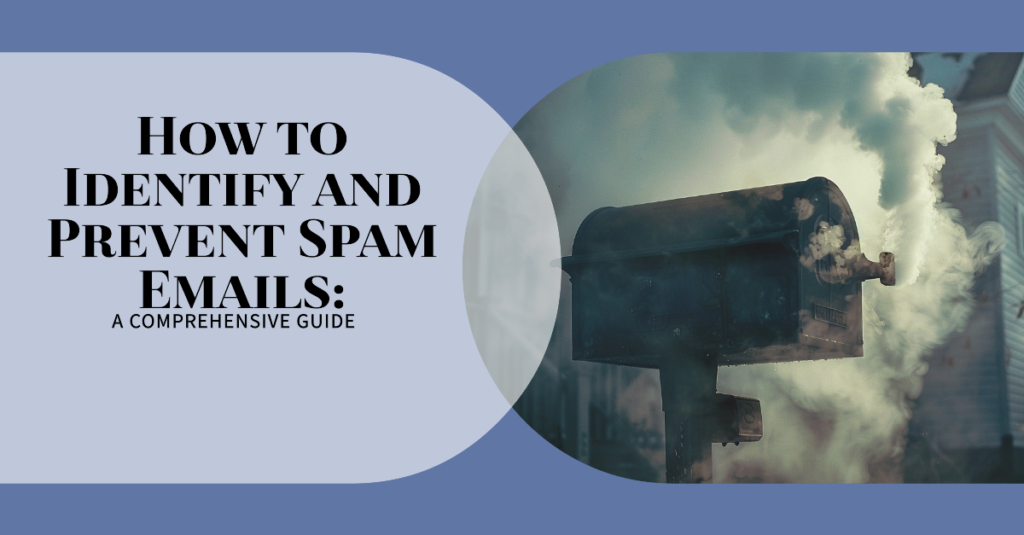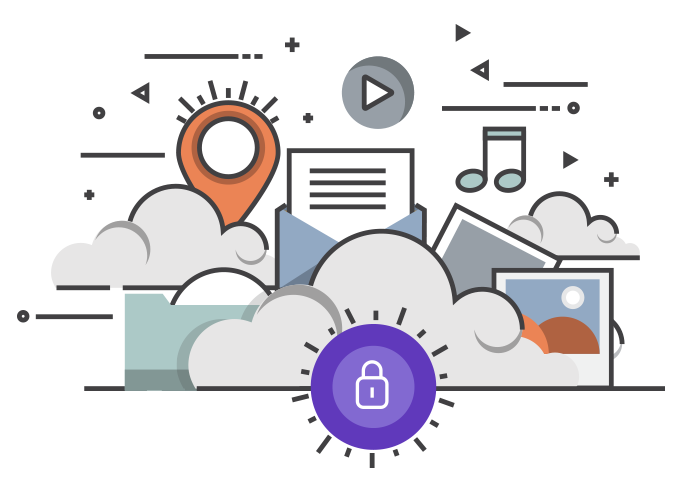Prevent Spam Emails

Prevent Spam Emails
How do I stop receiving constant spam emails?
To stop receiving constant spam emails, you can take several proactive measures:
- Use spam filters: Most email providers offer built-in spam filters that automatically detect and filter out spam emails. Make sure to enable these filters in your email settings.
- Mark emails as spam: When you receive a spam email, mark it as spam or junk in your email client. This helps train the spam filter to recognize similar emails in the future and redirect them to the spam folder.
- Unsubscribe from mailing lists: If you’re receiving spam from legitimate companies or organizations, you can often unsubscribe from their mailing lists by clicking on the unsubscribe link, usually found at the bottom of the email. Be cautious, however, as clicking on unsubscribe links in suspicious emails can confirm your email address to spammers.
- Use a secondary email address: Consider using a separate email address for online purchases, registrations, and other activities that may increase your exposure to spam. This way, your primary email address remains spam-free for important communications.
- Avoid sharing your email address: Be cautious about sharing your email address on public forums, social media platforms, or websites, as this can increase the likelihood of receiving spam emails. Whenever possible, use disposable or masked email addresses for online registrations and sign-ups.
- Install antivirus software: Use reputable antivirus software that includes spam filtering capabilities. This software can help detect and block spam emails before they reach your inbox.
- Regularly update your email preferences: Review and update your email preferences with companies and organizations to ensure you’re only receiving relevant communications. Opt out of receiving promotional emails or newsletters that you no longer wish to receive.
By implementing these strategies, you can significantly reduce the number of spam emails you receive and enjoy a cleaner and more organized inbox.
Why am I suddenly getting so many spam emails?
If you’re suddenly receiving an influx of spam emails, there could be several reasons for this:
- Email address exposure: Your email address may have been exposed or leaked through various means, such as through online registrations, social media profiles, public forums, or data breaches. Spammers often collect email addresses from these sources to send unsolicited emails.
- Phishing attacks: You may have fallen victim to a phishing attack, where scammers trick you into providing your email address or other personal information through fraudulent emails or websites. Once scammers obtain your email address, they may use it to send spam emails or make phishing attempts.
- Malware infections: Malware infections on your computer or mobile device can compromise your email security and lead to an increase in spam emails. Malware may harvest email addresses from your contacts or steal login credentials, allowing attackers to access your email account and send spam emails.
- Previous interactions: Previous interactions with spam emails, such as clicking on links or responding to emails, can inadvertently confirm your email address to spammers and result in more spam emails being sent to you.
- Data breaches: If your email address is associated with an online service or platform that experiences a data breach, your email address may be exposed to attackers who use it for spamming purposes.
To mitigate the influx of spam emails, consider implementing the following measures:
- Use the spam filters provided by your email provider to automatically detect and filter out spam emails.
- Mark spam emails as junk or spam in your email client to train the spam filter to recognize similar emails in the future.
- Avoid clicking on links or downloading attachments from suspicious or unknown senders.
- Keep your devices and software up-to-date with the latest security patches and updates to prevent malware infections.
- Be cautious about sharing your email address online, and only provide it to trusted sources.
- Use unique and strong passwords for your email accounts to prevent unauthorized access.
- Consider using disposable or masked email addresses for online registrations and sign-ups to limit exposure to spam.
By taking these precautions, you can reduce the impact of spam emails and better protect your email account from unwanted solicitations and phishing attempts.
How can spam emails be prevented?
Spam emails can be prevented through various measures, including:
- Use spam filters: Most email providers offer built-in spam filters that automatically detect and filter out spam emails. Enable these filters in your email settings to help reduce the amount of spam you receive.
- Mark spam emails: If spam emails do make it to your inbox, mark them as junk or spam in your email client. This helps train the spam filter to recognize similar emails in the future and filter them out accordingly.
- Avoid clicking on suspicious links: Be cautious when clicking on links or downloading attachments from unknown or suspicious senders. These links could lead to phishing websites or malware downloads.
- Don’t respond to spam: Replying to spam emails or clicking on unsubscribe links may confirm to spammers that your email address is active, leading to more spam. Avoid responding to or engaging with spam emails in any way.
- Keep your email address private: Be mindful of where you share your email address online and avoid posting it publicly on websites or social media platforms. Spammers often harvest email addresses from these sources.
- Use disposable email addresses: Consider using disposable or masked email addresses for online registrations and sign-ups. This way, if the email address is compromised or starts receiving spam, you can simply discard it without affecting your primary email account.
- Use strong passwords: Ensure that your email account is protected with a strong, unique password. This can help prevent unauthorized access to your account, which could lead to spamming or phishing attempts.
- Keep software up to date: Regularly update your email client, operating system, and security software to patch any vulnerabilities that could be exploited by spammers or malware.
By implementing these preventive measures, you can reduce the likelihood of receiving spam emails and better protect your inbox from unwanted solicitations and potential security threats.
Is it better to block spam emails or just delete them?
Both blocking and deleting spam emails can be effective strategies, but they serve different purposes:
- Deleting spam emails: Deleting spam emails is a quick and straightforward way to remove unwanted messages from your inbox. While this approach helps keep your inbox clutter-free, it doesn’t prevent future spam emails from reaching your inbox.
- Blocking spam emails: Blocking spam emails involves configuring your email client or service to automatically divert messages from specific senders or domains to the spam or junk folder. This prevents further emails from those sources from appearing in your inbox. While blocking can be effective for dealing with persistent spam senders, it may require ongoing management to update the list of blocked addresses or domains.
In general, deleting spam emails is suitable for immediate cleanup of your inbox, while blocking is more effective for long-term prevention of spam. Depending on your email provider and preferences, you may choose to use one or both methods to manage spam effectively.
Prevent Spam Emails
Understanding Spoofing:
Spoofing is a technique used by cybercriminals to disguise the origin of an email, making it appear as though it came from a legitimate source. When you forward a suspicious email to spoof@, it allows email providers to analyze the message’s headers and determine if it is indeed spoofed. By identifying these spoofed emails, email providers can take action to block them and prevent them from reaching other users’ inboxes.
How to Identify and Prevent Spam Emails: A Comprehensive Guide
Prevent Spam Emails
In today’s digital age, spam emails have become a pervasive nuisance, cluttering our inboxes with unwanted messages and potential security threats. However, by understanding how to identify and prevent spam emails, you can better protect yourself and your information online. One effective method is by sending suspicious emails to spoof@. This simple action can help identify spam and prevent further malicious activity. In this comprehensive guide, we’ll explore how this process works and other key strategies for identifying and avoiding spam emails.
Prevent Spam Emails
Signs of Spam:
In addition to forwarding suspicious emails to spoof@, there are several other indicators that can help you identify spam:
Unknown Sender: Be wary of emails from unknown or unfamiliar senders, especially if they contain suspicious links or attachments.
Poor Grammar and Spelling: Many spam emails contain grammatical errors and spelling mistakes, as they are often created hastily by cybercriminals.
Urgent Requests: Beware of emails that pressure you to take immediate action, such as clicking on a link or providing personal information.
Suspicious Links and Attachments: Avoid clicking on links or downloading attachments from unfamiliar sources, as they may contain malware or phishing scams.
Prevent Spam Emails
Preventing Spam:
To further protect yourself from spam emails, consider implementing the following preventive measures:
- Use Spam Filters: Enable spam filters provided by your email service provider to automatically detect and filter out spam messages.
- Be Cautious with Personal Information: Avoid sharing personal information, such as your email address, on public websites or forums where it can be harvested by spammers.
- Verify Sender Identity: Before responding to an email or clicking on any links, verify the sender’s identity and confirm that the email is from a legitimate source.
- Educate Yourself: Stay informed about the latest spam email tactics and trends, and educate yourself on how to recognize and avoid them.
Prevent Spam Emails
By forwarding suspicious emails to spoof@ and remaining vigilant for signs of spam, you can help protect yourself and others from falling victim to malicious cyber activities. Remember to always exercise caution when interacting with emails, especially those from unknown or unfamiliar sources. With these proactive measures in place, you can enjoy a safer and more secure online experience.
Prevent Spam Emails
Jeff is a U.S.-based, five-star rated online PC and Mac help provider.
With more than 1200 five-star reviews, he is worth checking out.
Just Google That Tech Jeff!






Leave A Comment
You must be logged in to post a comment.